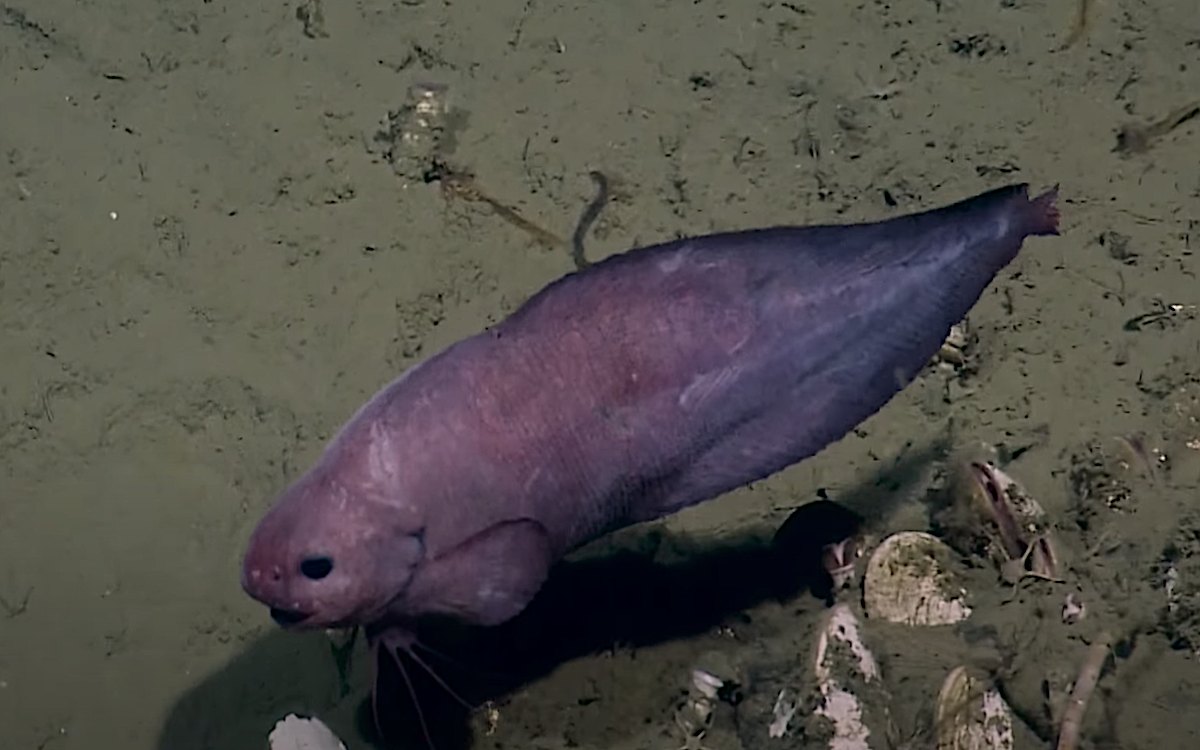The Slimy, Scaleless Snailfish
Snailfish are well-adapted to surviving in the deep sea

With one look at the snailfish, you can see where it gets its name. Its gelatinous, tadpole-like appearance is reminiscent of a snail without its shell (if that snail had fins). Although these translucent critters might not be winning any beauty contests, they are fascinating deep-sea fish that have adapted to one of the most extreme habitats on earth.
Let’s dive in and learn more about the snailfish.
What are snailfish?
The name “snailfish” can refer to any of the more than 400 species found in the family Liparidae. Sometimes they’re also called seasnails—not to be confused with gastropod sea snails (which are the animals you probably picture when you hear the word “seasnail”).
Snailfish are found all over the world, including in Antarctica. Although they’re found in shallow waters, the deep-sea species are the ones that stand out. Lots of fish can survive in shallow waters—how can snailfish survive 7,000 meters below the surface?
A deep-sea life
It’s no surprise that the deep sea is pretty inhospitable to most animals. It’s dark, freezing cold and animals there are under a lot of pressure literally—the pressure in the deepest ocean trenches is equivalent to having a walrus stand on the tip of your finger. A number of species manage to survive in deep sea waters, but the hadal snailfish is the deepest-known fish. The hadal snailfish has been recorded 8,200 meters (27,000 feet) below the surface.
Hadal snailfish have a few special adaptations that allow them to survive in such harsh conditions. First, unlike other shallow-dwelling fish species, they lack a swim bladder. Where others use a swim bladder to move up and down in the water column, in the deep sea it becomes a liability under pressure. Scientists have found instead they use a gelatinous substance and species muscle enzymes to help them control their buoyancy.
More fish to discover
Since we know more about the surface of the moon than we do the sea floor, each deep-sea expedition brings the chance to discover new species. A recent research crew off of Australia found two new species of snailfish when baiting 6,500 meters down. They were observed with special underwater cameras, which is a good thing—once the snailfish are brought to the surface, they begin to “melt” under the heat and changing pressure.
But scientists have other tricks up their sleeves to learn more about these little-studied species. In 2019, scientists sequenced the genome of the hadal snailfish—the first deep-sea fish to have its entire genome identified. Genome sequencing, or identifying the full DNA pattern of an organism, helps scientists learn more about their adaptations and how they’re related to other fish. Research found that the deep-sea hadal snailfish diverged from a shallow-water relative about 20 million years ago and accumulated genetic adaptations that make its bones softer and more pressure-tolerant.
Although some snailfish species live thousands of meters below the surface, they can’t escape human influence. Our ocean’s deepest trenches have evidence of chemical pollutants and plastics and aren’t immune to the effects of climate change. Learn more about the animals in the deep sea and take action to protect them and all animals that live in the ocean.